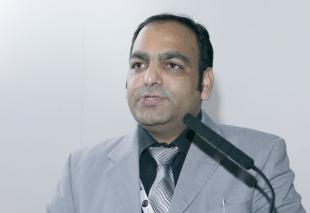

Medical tourism lucrative, but challenging

Health travel sector expands rapidly, but agents told to be cautious before jumping in
Medical tourism is a US $20 billion industry that is expected to be worth $60 billion in five to 10 years, according to a leading expert on the sector.
However, managing director and CEO ExHealth Dr Prem Jagyasi, said despite medical tourism being a rapidly growing phenomenon, travel agents looking to take advantage of the opportunity needed to be aware of the “many challenges involved in healthcare travel”.
“Healthcare providers are highly monitored; you have to ask how do you promote your services; what are patients’ needs and can you assure them on all pre-operation and post-operation needs?” Dr Jagyasi said.
“How do you identify the good healthcare providers and do you charge the patient or the provider — and then you have to always expect the unexpected?”
According to medical travel specialist Galavantor Middle East’s CEO Rose Ann Shetty, there were other challenges for companies entering into the medical sector.
“Creating awareness among local insurance companies to cover overseas surgeries and advertising due to the MOH restrictions is our biggest challenge,” Shetty said.
She also advised agencies looking to enter the medical tourism sector to be aware of the legal implications of sending a patient across borders.
“Hospitals are answerable to the law in their country and UAE laws will not apply,” she said.
Due to the technical nature of so many aspects of medical tourism, both Shetty and Dr Jagyasi said it was important to be a specialist in the field.
“Specialist agencies, healthcare facilitators or intermediaries spend considerable time undertaking due diligence and compliance audits on hospitals and surgeons to ensure their clients receive the highest standards of treatment and medical care,” Shetty said.
Galavantor set up in the Middle East to cater to the government’s retraction of free medical care and the increase in expatriates over the last decade.
“There were also residents without medical cover, those requiring medical procedures excluded from their insurance cover, as well as those who simply cannot afford healthcare in Dubai led us to evaluate the market and offer this service under our Health and Wellness Tours segment,” she said.
Despite Dr Jagyasi advising destinations looking to become hubs for medical tourism to ensure they had their product right before promoting themselves, Shetty did see a potential for the UAE as an inbound medical tourism destination, with Galavantor offering inbound services by the end of the third quarter of 2009.
However, Shetty added the inbound medical market to Dubai would not be as the government envisioned.
“The two major hurdles are quality and price. While facilities are excellent in the UAE, there is a serious lack of qualified and experienced medical workforce,” she said.
“It is not enough to have been educated in the West — specialists need to have experience and proven, successful track records.”